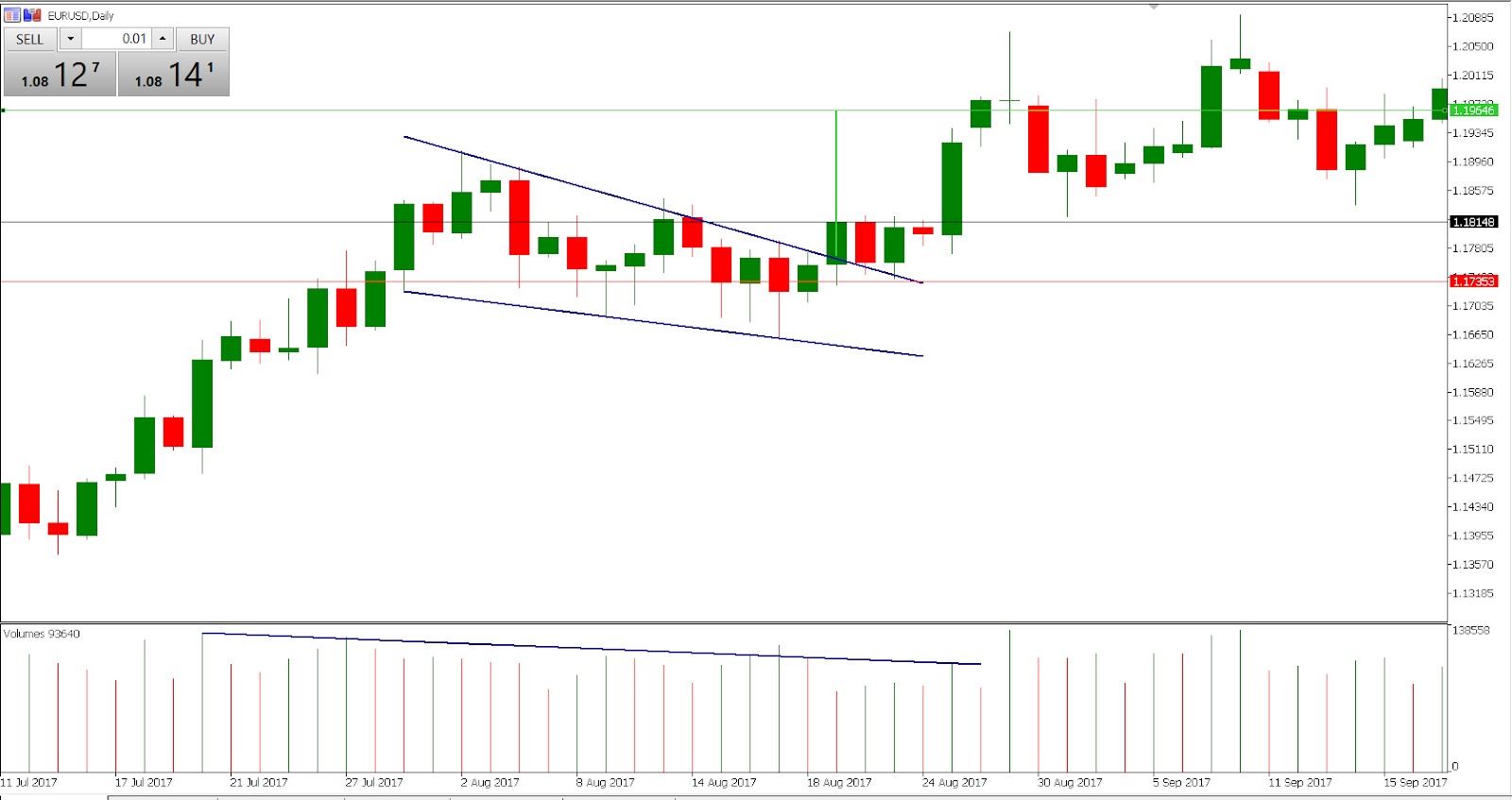Trading the Falling Wedge
Let us now look at the same example from a more technical trading perspective. Once we spot a falling wedge that fulfills all criteria, we start focusing on the main elements of a trade: entry, stop loss and take profit, as well as the overall risk associated with this trading opportunity.
Paying attention to volume figures is really important at this stage. The continuous trend of a decreasing volume is significant as it tells us that the buyers, who are still in control despite the pull back, are not investing much resources yet.

A break of the wedge to the upside has to be confirmed by a daily close above the wedge, which is exactly what happens. At this point, you have two opportunities:
- You enter a trade as soon as the close occurs
- You wait for a potential pull back for the price action to retest the broken resistance.
The first option is more safe as you have no guarantees whether the pull back will occur at all. On the other hand, the second option gives you an entry at a better price. In this case we will go for the option number one.
A stop-loss order should be placed within the wedge, near the upper line. Any close within the territory of a wedge invalidates the pattern. You can see that in this case the price action pulled back and closed at the wedge’s resistance, before eventually continuing higher on the next day.
Finally, you have to set your take profit order, which is calculated by measuring the distance between the two converging lines when the pattern is formed. This way we got the green vertical line, which is then added to the point where the breakout occured. Thus, the other end of a trend line gives you the exact take-profit level.
Our trade details are as follows: Entry - $1.1815, SL - $1.1735 and TP - $1.1965. Hence, we are risking 80 pips in order to make 150 pips, which is a R:R (risk-reward) ratio of nearly 1:2. A week after we had entered our trade, the profit-taking order was hit, banking us 150 pips.
As always, we encourage you to open a demo account and practice trading the falling wedge, as well as other technical formations. This way, you will get more familiar with different trading approaches and be better prepared to trade your own capital in live markets at a later stage.
Any opinions, news, research, analyses, prices or other information contained on this website is provided as general market commentary and does not constitute investment advice. ThinkMarkets will not accept liability for any loss or damage including, without limitation, to any loss of profit which may arise directly or indirectly from use of or reliance on such information.